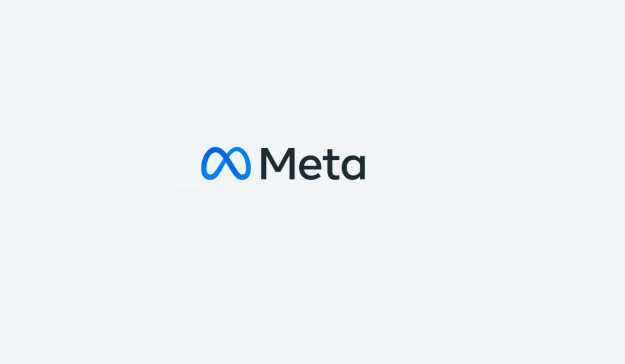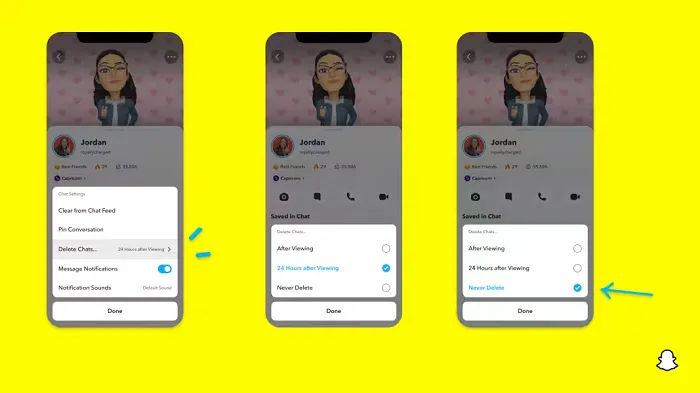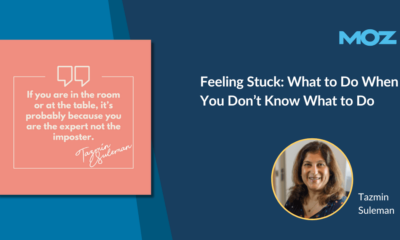SOCIAL
Meta Reports Slowdown in User Growth and Revenue Amid Shifting Economic Conditions

Tough times at Meta, with the company reporting a decline in monthly active Facebook users, and a further slowdown in revenue, as global economic trends continue to impact the company’s overall performance.
First off, on usage – Facebook is currently seeing 1.97 billion daily active users, a slight increase on last quarter.
The increases were almost entirely driven by the Asia Pacific market, with Facebook continuing to grow in India and Indonesia specifically. Though Facebook usage has continued to decline in Europe, this time in a significant way.
Part of that would obviously be attributed to Russia, where Facebook is facing restrictions due to Government censorship around the invasion of Ukraine. Facebook has 70 million Russian users, and with this in mind, it’s probably surprising that the decrease hasn’t been more significant in this region.
But then again, Facebook’s monthly active user counts look even worse.

As you can see, Facebook lost two million MAU overall in the period, with, again, European losses being the most significant.
The Russian invasion likely explains much of this, so it may not be as big a deal as it seems, while Facebook has continued to see growth in every other market, if slight in some.
As such, it’s difficult to say what the figures mean, in a broader growth context, given the surrounding environment, and impacts around the world.
Meta has also provided its ‘family of apps’ usage, which incorporates Facebook, WhatsApp, Messenger and Instagram.

As you can see here, overall, Meta’s still growing, up just slightly on the last period.
Again, the broader impacts of Russia’s war on Ukraine are a big factor, so it’s hard to take anything definitive from this. But the conflict also doesn’t appear to be easing, and that will continue to have various market impacts – aside from the horrendous human toll – moving forward.
In terms of revenue, Meta brought in $28.82 billion for the quarter, versus market expectations of $28.94 billion.

Again, Europe is where Meta is seeing the biggest impact – which makes perfect sense, of course, but is still a challenge for Meta to deal with.
Meta attributes the slowdown to weaker advertising demand driven by ‘broader macroeconomic uncertainty’, while it’s also seen lower sales of its VR headsets, impacted by production delays, rising costs, etc.

Just this week, Meta announced an increase in the price of its flagship Quest 2 VR headset, which is a big deal considering that Meta needs to get more headsets into more homes to realize its metaverse vision. We’re also heading into the holiday season, when it’s most likely to see a sales jump. That could make it a particularly impactful change, which could have knock-on effects for the company’s broader plans for the next stage.
Though it’s probably this chart that will be the most discussed from Meta’s latest results:

Meta’s overall income – i.e. the money that it’s taking in after costs – is at the lowest level it’s been for two years.
That provides more context as to why the company is now embarking on cost-cutting measures, and why CEO Mark Zuckerberg recently told staff that many of them ‘shouldn’t be here’.
Meta’s staff headcount jumped from 59k in 2020, to 72k a year later, as part of its increasing push into the metaverse, and expanding its global footprint. That drive, given the shifting economic landscape, has proven ultimately too aggressive, and has since seen Meta abandon projects like its own smartwatch, consumer Portal devices and social audio projects, while also slashing investment in original content and its Bulletin newsletter offering.
It seems like Meta is too big to fail, but the chart above provides true scope as to how much its metaverse investment is costing – which could ultimately pay-off, if Meta becomes the engagement platform of the next generation, for a broad range of options. But the risk is also clear, and Meta will need to tread more carefully moving forward.
Which could be difficult, with Zuckerberg also committed to ‘going for it’ in regards to the metaverse shift, and guiding the future of digital interaction. This week, Zuckerberg told staff that Meta is in a ‘philosophical competition’ with Apple to build the metaverse, with the two tech giants on course to clash over what comes next.
“This is a competition of philosophies and ideas, where they believe that by doing everything themselves and tightly integrating that they build a better consumer experience, and we believe that there is a lot to be done in specialization across different companies, and [that] will allow a much larger ecosystem to exist.”
In order to come out on top, Meta will need to keep pumping money in, while its ad revenue likely continues to decline, at least in the immediate term.
It’s a difficult sell for the company, which now needs to face up to shareholders and explain the grand vision once again.
The message will be that this is the right path, that it has to stay the course – that it can’t allow another company to push in and own the metaverse space.
How that’s received could have a big impact on the platform’s continual expansion, which will also influence ad display, user experience, and opportunities.
SOCIAL
Snapchat Explores New Messaging Retention Feature: A Game-Changer or Risky Move?

In a recent announcement, Snapchat revealed a groundbreaking update that challenges its traditional design ethos. The platform is experimenting with an option that allows users to defy the 24-hour auto-delete rule, a feature synonymous with Snapchat’s ephemeral messaging model.
The proposed change aims to introduce a “Never delete” option in messaging retention settings, aligning Snapchat more closely with conventional messaging apps. While this move may blur Snapchat’s distinctive selling point, Snap appears convinced of its necessity.
According to Snap, the decision stems from user feedback and a commitment to innovation based on user needs. The company aims to provide greater flexibility and control over conversations, catering to the preferences of its community.
Currently undergoing trials in select markets, the new feature empowers users to adjust retention settings on a conversation-by-conversation basis. Flexibility remains paramount, with participants able to modify settings within chats and receive in-chat notifications to ensure transparency.
Snapchat underscores that the default auto-delete feature will persist, reinforcing its design philosophy centered on ephemerality. However, with the app gaining traction as a primary messaging platform, the option offers users a means to preserve longer chat histories.
The update marks a pivotal moment for Snapchat, renowned for its disappearing message premise, especially popular among younger demographics. Retaining this focus has been pivotal to Snapchat’s identity, but the shift suggests a broader strategy aimed at diversifying its user base.
This strategy may appeal particularly to older demographics, potentially extending Snapchat’s relevance as users age. By emulating features of conventional messaging platforms, Snapchat seeks to enhance its appeal and broaden its reach.
Yet, the introduction of message retention poses questions about Snapchat’s uniqueness. While addressing user demands, the risk of diluting Snapchat’s distinctiveness looms large.
As Snapchat ventures into uncharted territory, the outcome of this experiment remains uncertain. Will message retention propel Snapchat to new heights, or will it compromise the platform’s uniqueness?
Only time will tell.
SOCIAL
Catering to specific audience boosts your business, says accountant turned coach

While it is tempting to try to appeal to a broad audience, the founder of alcohol-free coaching service Just the Tonic, Sandra Parker, believes the best thing you can do for your business is focus on your niche. Here’s how she did just that.
When running a business, reaching out to as many clients as possible can be tempting. But it also risks making your marketing “too generic,” warns Sandra Parker, the founder of Just The Tonic Coaching.
“From the very start of my business, I knew exactly who I could help and who I couldn’t,” Parker told My Biggest Lessons.
Parker struggled with alcohol dependence as a young professional. Today, her business targets high-achieving individuals who face challenges similar to those she had early in her career.
“I understand their frustrations, I understand their fears, and I understand their coping mechanisms and the stories they’re telling themselves,” Parker said. “Because of that, I’m able to market very effectively, to speak in a language that they understand, and am able to reach them.”Â
“I believe that it’s really important that you know exactly who your customer or your client is, and you target them, and you resist the temptation to make your marketing too generic to try and reach everyone,” she explained.
“If you speak specifically to your target clients, you will reach them, and I believe that’s the way that you’re going to be more successful.
Watch the video for more of Sandra Parker’s biggest lessons.
SOCIAL
Instagram Tests Live-Stream Games to Enhance Engagement

Instagram’s testing out some new options to help spice up your live-streams in the app, with some live broadcasters now able to select a game that they can play with viewers in-stream.
As you can see in these example screens, posted by Ahmed Ghanem, some creators now have the option to play either “This or That”, a question and answer prompt that you can share with your viewers, or “Trivia”, to generate more engagement within your IG live-streams.
That could be a simple way to spark more conversation and interaction, which could then lead into further engagement opportunities from your live audience.
Meta’s been exploring more ways to make live-streaming a bigger consideration for IG creators, with a view to live-streams potentially catching on with more users.
That includes the gradual expansion of its “Stars” live-stream donation program, giving more creators in more regions a means to accept donations from live-stream viewers, while back in December, Instagram also added some new options to make it easier to go live using third-party tools via desktop PCs.
Live streaming has been a major shift in China, where shopping live-streams, in particular, have led to massive opportunities for streaming platforms. They haven’t caught on in the same way in Western regions, but as TikTok and YouTube look to push live-stream adoption, there is still a chance that they will become a much bigger element in future.
Which is why IG is also trying to stay in touch, and add more ways for its creators to engage via streams. Live-stream games is another element within this, which could make this a better community-building, and potentially sales-driving option.
We’ve asked Instagram for more information on this test, and we’ll update this post if/when we hear back.
-

 WORDPRESS7 days ago
WORDPRESS7 days ago10 WordPress Influencers to Follow in 2024 – WordPress.com News
-

 MARKETING7 days ago
MARKETING7 days agoFeeling Stuck: What to Do When You Don’t Know What to Do
-

 SEARCHENGINES6 days ago
SEARCHENGINES6 days agoMore Google March 2024 Core Update Ranking Volatility
-

 PPC6 days ago
PPC6 days agoCompetitor Monitoring: 7 ways to keep watch on the competition
-

 PPC5 days ago
PPC5 days agoA History of Google AdWords and Google Ads: Revolutionizing Digital Advertising & Marketing Since 2000
-

 WORDPRESS6 days ago
WORDPRESS6 days agoThrive Architect vs Divi vs Elementor
-

 PPC6 days ago
PPC6 days ago31 Ready-to-Go Mother’s Day Messages for Social Media, Email, & More
-

 WORDPRESS5 days ago
WORDPRESS5 days agoTurkish startup ikas attracts $20M for its e-commerce platform designed for small businesses















You must be logged in to post a comment Login